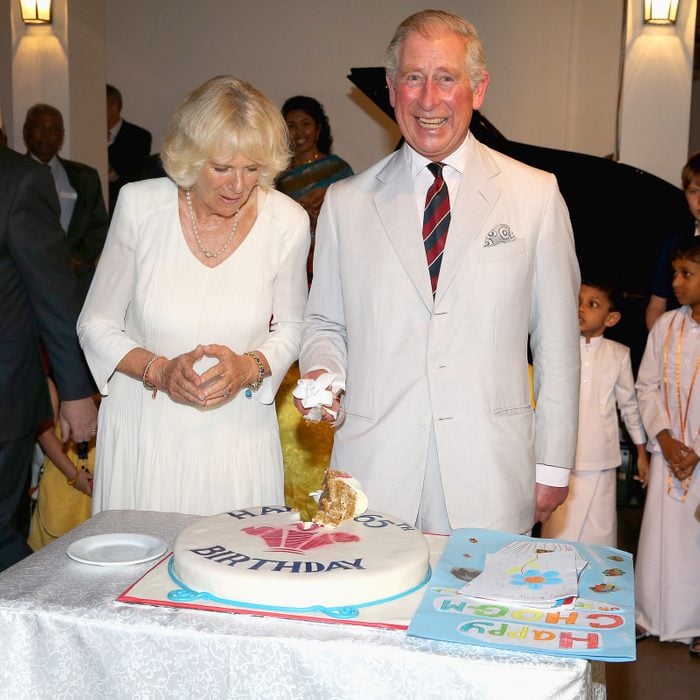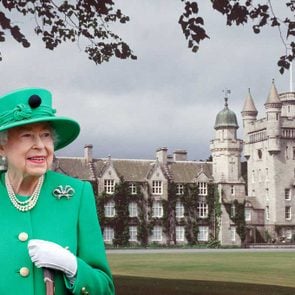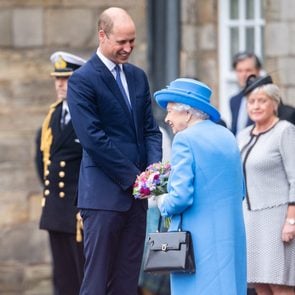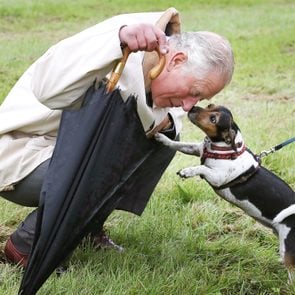Does King Charles Have Two Birthdays? Here’s Why He Celebrates Twice
Updated: Sep. 08, 2023

Love birthday celebrations? If so, the British royal family might make you slightly jealous. And it’s not just because money concerns over presents and parties are probably nonexistent for them. It’s that the reigning monarch also gets to celebrate two birthdays every year. Just think about how many birthday celebrations that added up to for Queen Elizabeth over her 70-year reign! But what does this mean for King Charles’s birthday now that he’s in charge? There have been some changes in the monarchy since the queen’s death, so will he continue this tradition?
We rounded up the details on this royal tradition, including how it started and what you can expect from it in the future. Plus, here’s how old King Charles actually is—and what he’ll be doing for his birthday (er, birthdays) this year.
Get Reader’s Digest’s Read Up newsletter for more royals, humor, cleaning, travel, tech and fun facts all week long.
When is King Charles’s birthday?
King Charles III was born on November 14, 1948, which means he will turn 75 this year. That said, this will be just his second birthday as king, since he took the throne following Queen Elizabeth’s death in September 2022. Charles was the oldest person in British history to ever become king (or queen, for that matter). His mother, by contrast, was just 25 years old when she became queen in 1956.
So how will the king celebrate his big day? “The monarch’s actual birthdays are traditionally private events,” explains royal expert Richard Fitzwilliams, adding that he expects Charles to spend the day with his family, without any fanfare or public appearances. “It’s a decision of the king what he wants to do for his birthday. Only when there’s a big one, like someone turning 70 or 80, might the details be officially announced.”
Why does King Charles have a second birthday?
Birthday No. 2 for King Charles comes on the first or second Saturday in June, and it is the “official” birthday celebration of the reigning monarch. Also called Trooping the Colour, this spectacle is broadcast by the BBC live to millions of households. It is also a military parade—complete with soldiers in uniform and more than 200 horses—followed by an appearance by the royal family on the balcony of Buckingham Palace.
Celebrating the monarch’s birthday and Trooping the Colour on the same day is a centuries-long tradition that goes back to King George II, who reigned from 1727 to 1760 and was concerned that his birthday might be spoiled by bad weather. Like King Charles’s birthday, his big day was in November. “[King George] wanted to celebrate in good weather and decided that June was the best bet,” says Fitzwilliams. And so, the tradition of the monarch’s two birthdays was born!
Charles already celebrated his first Trooping the Colour on June 17, 2023, and the next one will take place on June 8, 2024.
How did Trooping the Colour get its start?
According to the official website of the royal family, Trooping the Colour likely originated in the early 18th century, though possibly even earlier. Back then, colorful flags of the battalion were carried (or “trooped”) down the ranks to remind the soldiers what they looked like and make sure they would recognize them in case they got separated from their unit during a battle. So, unlike today, the military parade wasn’t originally a celebration but a necessary practice of the armed forces that could potentially save lives. The term colours itself was implemented because the flags also displayed the uniform colors and insignia of the British Army.
Since 1748—and King George II’s decision to beat the British weather—Trooping the Colour has also marked the monarch’s official birthday.
What happens at Trooping the Colour?
Trooping the Colour is one of the highlights in the royal calendar. More than 1,400 soldiers, 200 horses and 400 musicians gather to show off their military precision, their horsemanship and, most of all, their strong bond with the royal family. The spectacle starts and finishes at Buckingham Palace, from where the senior royals (including the king and queen, the Prince and Princess of Wales and Princess Anne)—some on horses, others in carriages—make their way down the Mall to nearby Horse Guard’s Parade for the official display, a simulation of a march to the battlefield by working soldiers. Around the parade square, 8,000 members of the public can watch the display up close, alongside the royal family.
Royal fans who don’t win a seat in the annual ballot (at least 250,000 try their luck every year) can still be part of the celebrations by joining the tens of thousands of flag-waving spectators along the Mall and on the edges of St. James’s Park. Trooping the Colour lasts from 10 a.m. to 1 p.m. and ends with a Royal Air Force fly-past, watched by the royal family from the Buckingham Palace balcony. Costs for the event are roughly $70,000.
Was Charles’s first Trooping the Colour any different than previous celebrations?
Royal watchers might wonder if King Charles’s birthday parade is any different from Queen Elizabeth’s, especially since he has promoted the idea of a slimmed-down monarchy. In terms of the pomp and circumstance, that doesn’t seem to be the case. “Trooping the Colour is a centuries-old tradition with a purpose: to show the very close relationship the monarch has with the armed forces,” Fitzwilliams explains. “It has iconic status and remains unchanged.”
There was, however, one notable difference at Charles’s first Trooping the Colour. He revived a tradition that Queen Elizabeth gave up in 1986 when she was 60 years old: He appeared on horseback, riding next to Princess Anne and Prince William.
That said, Trooping the Colour might change once William becomes king. Britain’s future monarch is, as Fitzwilliams says, in a “slight dilemma,” as his birthday is on June 21. That’s not only the same month Trooping the Colour currently takes place but also usually around the Royal Ascot Racing Weekend, another noteworthy event in the royal calendar. “He might decide to just have one birthday, or he might celebrate earlier,” says Fitzwilliams. “It’s up to the monarch if they want to continue the tradition or not.”
About the expert
- Richard Fitzwilliams is one of Britain’s most prominent royal experts. He has followed the lives of the royal family for decades and regularly shares his expertise in media outlets around the world.
Sources:
- Royal.uk
- The British Army: “What Is Trooping the Colour?”
- Ministry of Defence
- Reuters: “First ‘Trooping the Colour’ parade for Britain’s King Charles”



